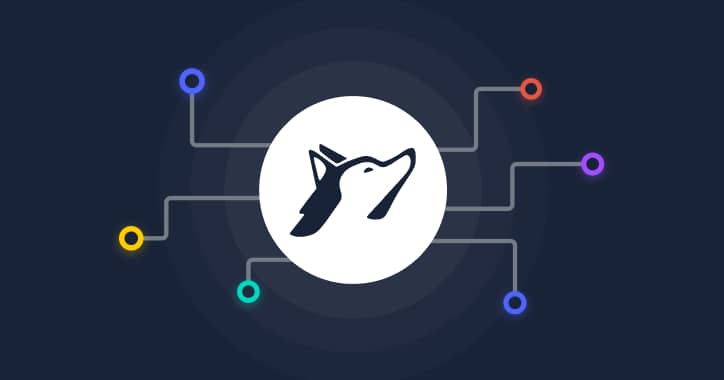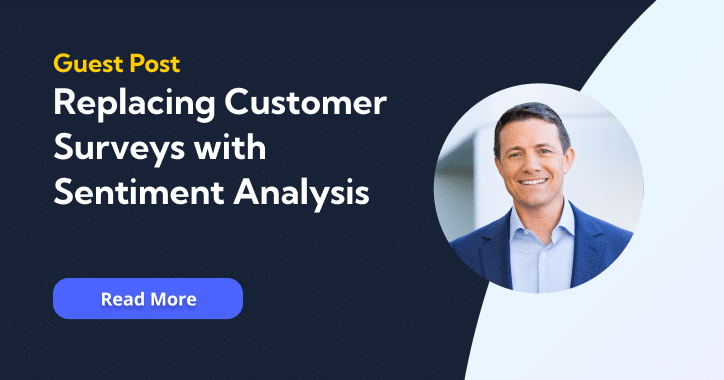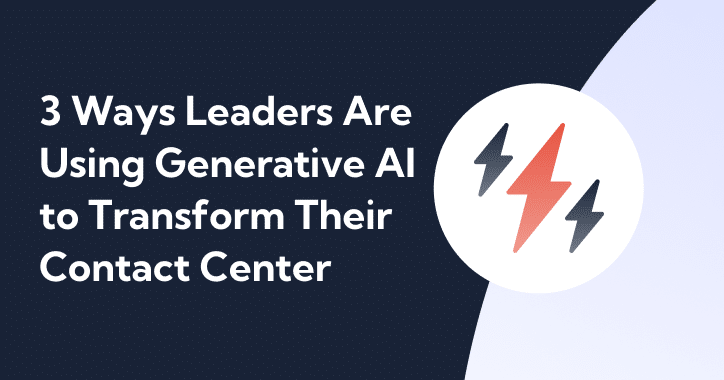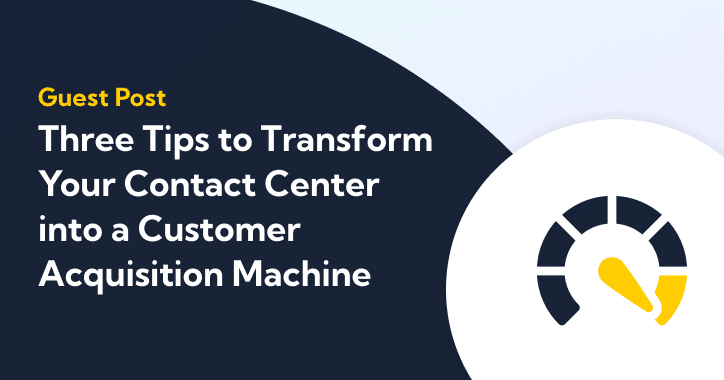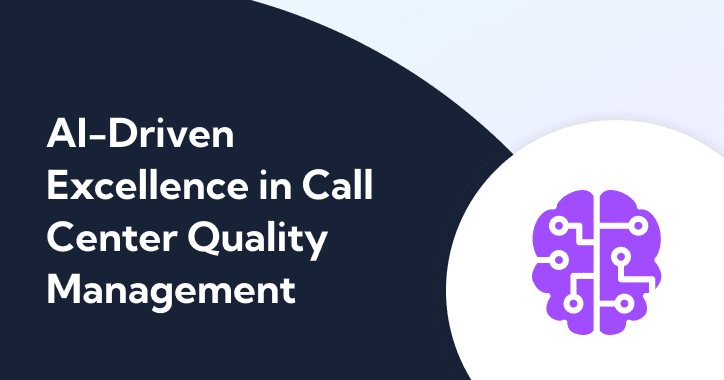Customers’ preferences and expectations are continually changing, making it more challenging for contact centers to keep up. Understanding your customers’ needs, pain points, and desires has become crucial for business success.
With the help of conversational analytics, you can gain deeper insights into your customers’ intent and behaviors, enabling you to make data-driven decisions.
In this post, we’ll dig into the science behind conversation analytics, the opportunities it unlocks, and how it can be beneficial for your organization as a whole.

What is Conversation Analytics?
Conversational analytics is the process of extracting data from customer conversations and analyzing it for the purpose of improving customer experience. Conversational analytics uses Natural Language Processing (NLP) to understand customer intent and provide appropriate responses that address the customer pain points.
NLP can understand human conversations and derive actionable insights from them using a combination of computer science and linguistics. Unlike other forms of customer analytics, conversation analytics can analyze conversations across many different types of channels, in the form of both voice and text data. This may include emails, social media chats, chatbot conversations, and customer phone calls.
How Does Conversational Analytics Work?
The working principle behind conversation analytics tools is based on Artificial Intelligence and Natural Language Processing models that analyze the information you feed them and provide you with accurate reports containing useful insights about your customers’ behavior.
These behavioral insights help identify which conversations were positive and negative, and thus, understand the customer intent. They can also be used to identify and solve problems related to customer experience.
Suppose that one of your customers has chatted with your AI chatbot to complain about a problem with your product. The conversation analytics tool analyzes the conversation, and based on information from historical conversations about the same problem, the tool helps you learn more about this particular problem and whether any efforts you’ve made to solve it have been fruitful.
The insights you get from the conversation analytics tool also help predict future customer interactions related to this problem by identifying trends and opportunities.
Benefits of Conversation Analytics
Conversation analytics provide a wide range of opportunities for your contact center to meet the expectations of your customers. Some of the perks of utilizing conversation analytics can be summarized in the following points:
Analyzing Conversations Helps You to Get the Nuanced Story
While it’s possible to collect and analyze customer data with traditional analytics tools, they don’t give you the full picture.
Conversation analytics solutions help you spot patterns that drive the decision-making process. They also make it easier to predict customer behavior and tailor the support experience to their specific needs.
For instance, when analyzing different customer conversations about a certain product, the behavior of the customers can help management decide whether the product should be revised or even recalled before more customers lose trust in your brand. In other cases, it might just be a problem with how your agents interact with your customers. It could also be a problem with your key messaging – for example, overpromising what your product can deliver.
By combining sentiment analysis capabilities with powerful metrics, conversation analytics tools give you a comprehensive deep dive into the nuances of your customer conversations so you can take action.
Improved Efficiency
Conversational analytics software provides your agents with visualized customer data that helps them do their job faster and more effectively, leading to significant improvements in the efficiency compartment. Think of your conversational analytics solution as a virtual assistant that works with your agents to help them serve your customers more quickly with less effort.
Not to mention, since you won’t need live agents for frequent and routine customer queries, your agents will have more time to handle queries that require their attention.
Understanding Intent
Customer queries vary greatly in complexity, and in many situations, it can be hard for your agents to fully understand the customer’s intent. This becomes more of an issue if your organization offers different products that target different customer needs.
Conversational analytics make it easier to understand customer intent by processing the conversation’s information in the cloud. This also enables self-service opportunities by providing quick solutions to the most frequently asked customer questions through knowledge bases and chatbots.
This approach can help you utilize your customer service agents more effectively by only deploying them to handle more complicated customer queries.
On top of that, conversational analytics enable you to gain insights into your customers’ thoughts that your agents may otherwise be unable to notice.
For example, conversational analytics can better understand why your customers are frustrated, and therefore, predict how the same customers may behave in the future if they didn’t receive a resolution for their problem or the problem becomes a recurring one.
Get More Insights into the Customer Experience
Providing the best possible customer experience for your customers can be challenging without detailed insights that tell you how your customers feel at every step of the customer journey.
By utilizing a conversation analytics tool, you’ll be able to analyze customer conversations and get more insights into the customer experience, making it easier for you to identify areas of improvement and which stage of the customer journey leads to lost opportunities.
Data Democratization
Data democratization is achieved through AI-powered conversation analytics that lets you democratize data by making it accessible and understandable to everyone in your organization regardless of their familiarity with conversation analytics tools. This encourages team collaboration and keeps everyone in the loop, removing obstacles such as geography, language, and technical experience from the equation.
Conversation Analytics Use Cases
Some of the most popular use cases of conversation analytics in call centers include:
Integrating With Traditional Analytics Tools
Traditional analytics tools enable you to collect and analyze your contact center’s data and metrics and use the results in the decision-making process.
However, traditional analytics tools are pretty limited when it comes to interpreting conversational data. Sure, they’ll give you a lot of numbers, but they won’t really help you understand the root causes of the problems you’re facing. In other words, they lack context.
On the flip side, conversational analytics solutions use sentiment analysis to understand the customer’s intent from your chat or phone conversations. Combining the results from your conversation analytics and traditional analytics tools will give you both the numbers and insights you need to take action and provide a better experience for your customers.
It Assists Agents in Solving Customer Queries
Agents can serve customers more effectively when they have access to their historical data, behavioral patterns, and preferences.
Conversation analytics tools analyze and evaluate previous customer conversations, creating a highly personalized virtual profile for each customer. These insights help your agents personalize the conversation and the whole customer experience in each interaction.
It’s Good Practice to Gather as much Information as Possible
In the world of contact centers, there’s no such thing as too much information. Even the tiniest details about your products, customer interactions, and agent performance can make a significant difference in your contact center’s performance and the overall customer experience.
Conversational analytics deliver lots of detailed insights from your customers’ interactions with your agents across all of your support channels, enabling you to spot problems and patterns, as well as enhance your contact center’s service level.
It Helps You Capture the Voice of the Customer
Collecting feedback from your customers is one way to evaluate your contact center’s service level. However, customer feedback tends to be skewed, especially since not all customers are fully transparent with their evaluations.
Conversation analytics solutions eliminate human error during the process of extracting data from conversations and analyzing it. They use a set of predefined data structuring requirements to provide accurate data analytics.
Improve Agent Performance
Leveraging conversation analytics enables you to enhance your agents’ performance and boost productivity by gaining valuable insights into the quality of every single interaction between your customers and your agents. By quickly detecting issues that lead to low customer satisfaction (CSAT scores) and poor agent productivity, you’ll be able to provide personalized training programs for your agents.
With this newfound visibility, you can easily identify areas that require improvement and empower your agents with AI-driven knowledge base suggestions, brand-compliant responses, and escalation alerts, ensuring they stay on top of their work.
Reduce Customer Churn
Customer churn happens when your customer’s new product doesn’t meet their expectations, leading them to ask for a refund. For service-based businesses, customer churn is when a customer decides to unsubscribe from your service in favor of a competing service.
Conversational analytics can help you target customer churn by training the tool to track and analyze all conversations that end up with a customer abandoning your product or service. For example, you can set keywords like “refund”, “unsubscribe”, and “return”, and configure the tool to track conversations containing them.
The tool will provide you with insights from these conversations that can help you determine why the churn rate is high and what you can do to lower it. You may also manually check out the transcripts for deeper analysis.
What Are the Challenges of Implementing Conversation Analytics?
Conversational analytics faces several challenges due to the complexities of human language. For example, the use of sarcasm may lead to inaccurate conversational analysis since NLP models can’t yet detect it. Another challenge is the use of slang words, and while implementing machine learning with conversation analytics can help overcome this, there will always be some new words that your analytics software won’t understand.
What Is the Difference Between Conversational Analytics and Speech Analytics?
Conversation analytics involves comprehending the entire customer interaction, from its initiation to resolution, while also delving into the customer’s emotions and intent. By closely examining the dynamics of the conversation, it offers valuable insights into the underlying sentiment.
On the other hand, speech analytics focuses on identifying and evaluating individual words and assigning scores accordingly. In contrast, conversational AI analysis concentrates on the broader context of conversations while also applying a similar evaluative approach to that used in speech analytics for words.
Improve Your Customer Experience With Balto
By adopting conversational analytics, you can elevate your contact center operations and enhance the overall customer experience.
Balto provides invaluable real-time guidance to your agents using advanced conversational analytics capabilities, resulting in improved outcomes and increased sales.
Our cutting-edge AI-powered solution empowers your contact center by streamlining repetitive tasks, analyzing conversation data, and addressing customer queries on behalf of your agents. This enables them to dedicate their valuable time and energy to more critical responsibilities that demand their attention.
To learn more about our solution, take a look at our complimentary definitive guide available here. We’re also happy to offer you a free demo of the Balto platform so you can experience its capabilities firsthand.

